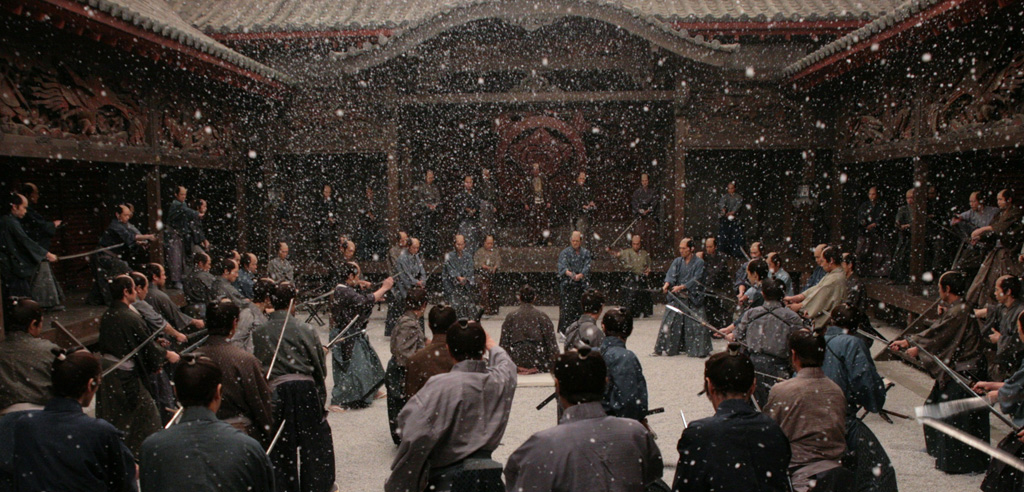In spite of the enticing possibilities of Takashi Miike’s first foray into 3d filmmaking, the extra dimension in his latest film “Hara-Kiri: Death of a Samurai” doesn’t require any glasses.
That may be an especially good thing in America, where the film will primarily be available on video-on-demand. However, in cities in which “Death of a Samurai” will play in its intended stereoscopic presentation, Miike brings a set of fresh eyes to an old tale, a remake of Masaki Kobayashi’s Criterion Collection-approved 1962 film “Harakiri” that feels unmistakably modern in the recession era.
Although the title when paired with the reputation of the director behind “Audition” and “Ichi the Killer” wouldn’t suggest it, “Death of a Samurai” is Miike at his most restrained, an graceful and simple story of the samurai Hanshiro (Ebizo Ichikawa) who ventures to the House of Li, the manor of the feudal lord Kageyu (Koji Yakusho) to take his own life in the honorable ritual of seppuku. Hanshiro’s motives aren’t clear to Kageyu, but in the poverty-stricken village where samurais are out of work, threats of suicide have become common with the citizenry approaching the lord with no intention of killing themselves and hopefully leaving with his sympathy and some spare change to help get them through the winter. To discourage Hanshiro from seeking charity, Kageyu relates the story of a headstrong ronin Yotome (Eita) whose plea didn’t go according to plan, but as Kageyu soon learns, Hanshiro hasn’t come to the lord’s courtyard with his hand out.
While Miike doesn’t shy away from the violence that’s become part of his signature —the film’s centerpiece is one excruciatingly long seppuku attempt — the bloodletting is kept to a minimum, which may serve as a form of torture for longtime fans who come expecting a sequel to “13 Assassins.” However, he should win over new admirers by demonstrating the skill that was so often hidden behind the provocation of his previous work, overcoming a slightly confusing first act (true to its predecessor) involving the flashback to Yotome’s story to reveal a compelling story of familial responsibility, desperation and even a tender romance at its core. Punctuated by a delicate score from Ryuchi Sakamoto (“The Last Emperor”) that moves from conveying the loneliness of the impoverished village to the tension of the film’s climactic action scenes, the film’s production values are sterling at every level.
Literally, however, that may pose a problem when it comes to seeing the film in 3D, since Miike’s palette of greys and blacks that permeate the film frequently make it look murkier when wearing the tinted lenses in a darkened theater. Perhaps given its subject, it’s only natural that it’s a double-edged sword considering Miike more than makes up for what’s lost in visibility with how he uses the 3D for additional depth of field, making scenes in the carefully curated House of Li particularly exquisite to behold and flashes of the rural locale outside its gates with its change of seasons represented in the colors of leaves that make the heartbeat just a bit faster even if it’s in the service of an ultimately sorrowful tale. But “Hara-Kiri: Death of a Samurai” offers a reason to rejoice, allowing Miike to stretch his abilities in a film that’s deliberately paced, but moving nonetheless in invoking an emotion rarely seen in his films before: compassion.
“Hara-Kiri: Death of a Samurai” will open in New York at the IFC Center and Los Angeles at the Downtown Independent on July 20th and will be available on video-on-demand nationwide beginning on July 18th.




